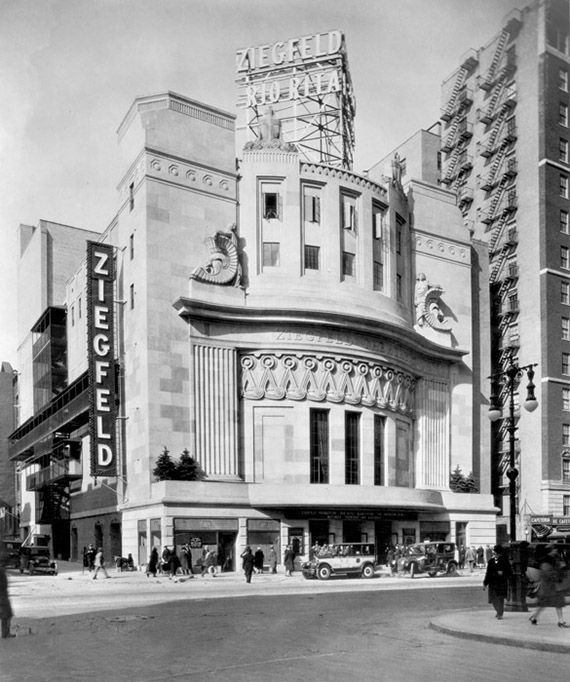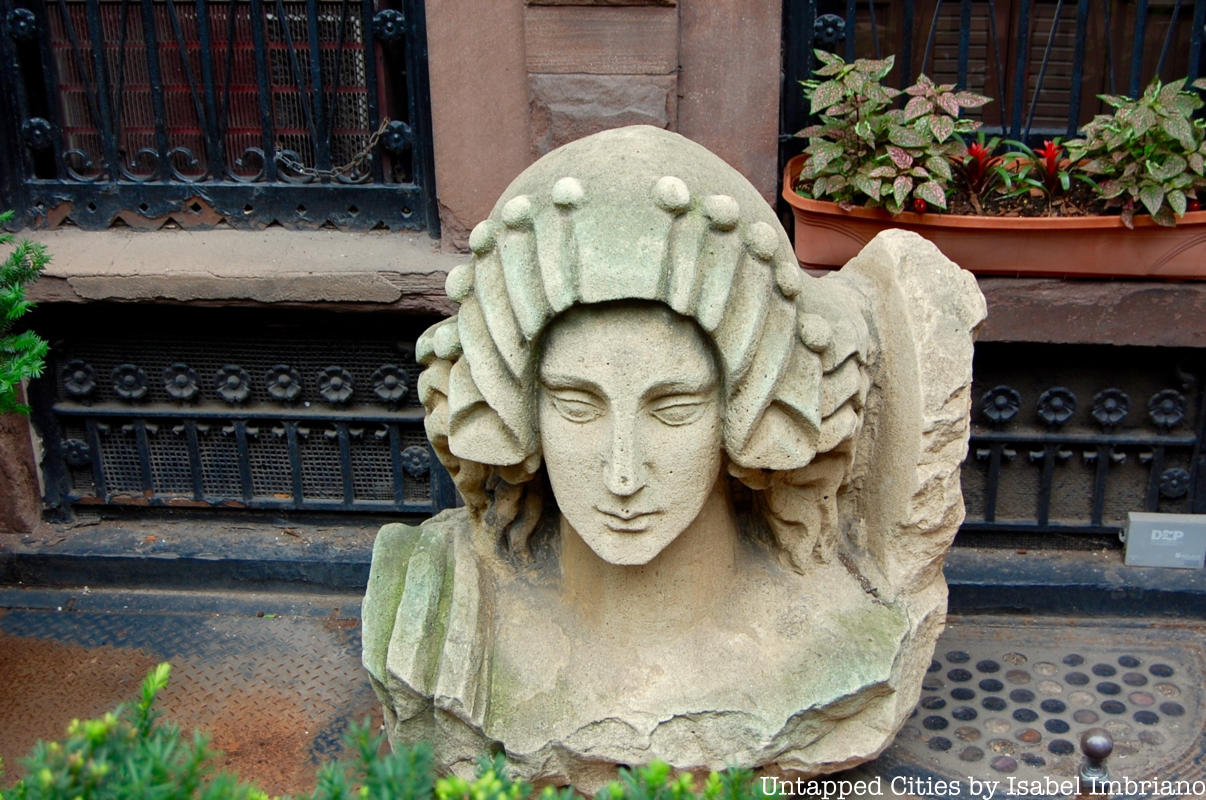The Ziegfeld Theater is named after the famous Broadway impressario, Florenz Ziegfeld Jr., who produced the famous musical Show Boat and conceived of the Ziegfield Follies. To this day, the name Ziegfeld conjures up a bygone era, of not only Gilded Age excess but also an allusion to a heyday in New York City theater history. The theater which bears his name has had many incarnations since the first structure was constructed beginning in 1925 on the west side of Sixth Avenue between 54th and 55th Streets. The current building of the same name, converted into an ballroom event space in 2017, was built in 1969 next door to an earlier version.
Ziegfeld’s renown is one of the reasons why both the 1966 demolition of the original theater, despite years of financial struggles and flip-flopping between movie theater and Broadway theater — it even served as an NBC studio for almost a decade — and the closing of its successor both led to much public outcry.
 Photo from Wikimedia Commons by Irving Underhill
Photo from Wikimedia Commons by Irving Underhill
The original theater was designed by Joseph Urban (with interior by noted theater designer Thomas W. Lamb). The New York Times hailed Urban on the opening of the Zeigfeld as “a creator who paints nothing more tangible than dreams.” Sixty years later, also in the New York Times, Paul Goldberger wrote of the theater, “The Ziegfeld was one of those buildings that went just a few years too soon – had it been able to hold on just a bit longer, a later age would surely have seen its value and refused to sanction its destruction.” Urban’s fantastical exteriors (he also designed the Hearst building which still stands) showed his experience in set design, and the Zeigfeld combined architectural flourishes from numerous ages. Modernism met Egyptian, Baroque and Neoclassicism. You could easily imagine this kind of building serving as a movie theater along Hollywood Boulevard in Los Angeles, more so than in New York City.
Unfortunately, there are almost no remnants of the original Ziegfeld Theater facade that you can see on the streets of New York City today (though the contents of the cornerstone of the Ziegfeld Theatre are at the New York Public Library and a rediscovered mural by Joseph Urban has been shown to the public on occasion). However, there is at least one vestige that you can see — and it’s in the front yard of a private brownstone residence at 52 East 80th Street.
The remnant is a huge, decapitated head of a Greco-Roman goddess, which likely laid at the front of the Ziegfeld Theater. But just how did it get to the yard of a random home? According to the New York Times, theatrical producer Jerry Hammer, who once owned the brownstone, was driving past the Ziegfeld Theater in the 1960s with developer Zachary Fisher, who said he was going to tear it down. Hammer (jokingly, supposedly) asked if he could have one of the theater’s grand limestone heads. A few months later, he heard a crane lowering the head down into his yard. “It’s a truck with a crane, and a head, and they ask me where I want it,” he told the Times. When he moved out in 1998, Hammer left the head behind but the sculpture has remained.
Next, see inside the second Ziegfeld Theater before it closed in 2016.






